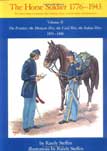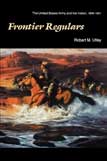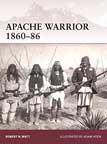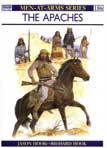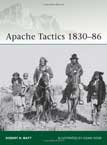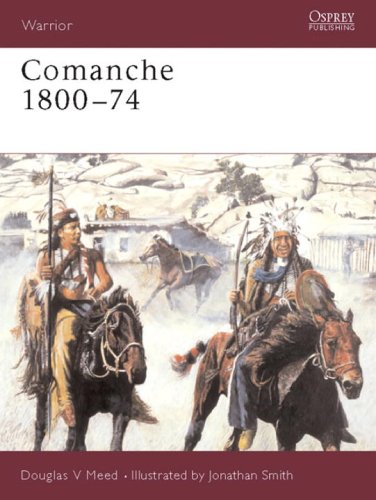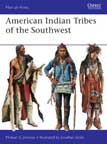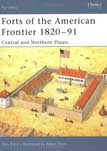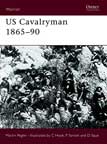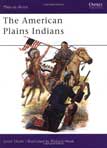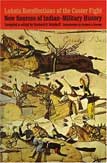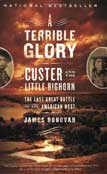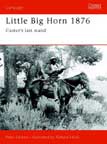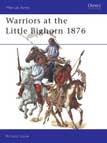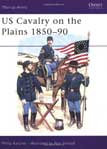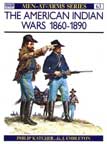

Drawing on vivid oral histories, Joseph M. Marshall’s intimate biography introduces a never-before-seen portrait of Crazy Horse and his Lakota community
Most of the world remembers Crazy Horse as a peerless warrior who brought the U.S. Army to its knees at the Battle of Little Bighorn. But to his fellow Lakota Indians, he was a dutiful son and humble fighting man who—with valor, spirit, respect, and unparalleled leadership—fought for his people’s land, livelihood, and honor. In this fascinating biography, Joseph M. Marshall, himself a Lakota Indian, creates a vibrant portrait of the man, his times, and his legacy.
Thanks to firsthand research and his culture’s rich oral tradition (rarely shared outside the Native American community), Marshall reveals many aspects of Crazy Horse’s life, including details of the powerful vision that convinced him of his duty to help preserve the Lakota homeland—a vision that changed the course of Crazy Horse’s life and spurred him confidently into battle time and time again.
The Journey of Crazy Horse is the true story of how one man’s fight for his people’s survival roused his true genius as a strategist, commander, and trusted leader. And it is an unforgettable portrayal of a revered human being and a profound celebration of a culture, a community, and an enduring way of life.
This is the second volume of a projected four-volume work. In Volume I the author delineated the uniforms, arms, accouterments, and equipment of the period from 1776 to 1850. In this volume he addresses himself to the eventful, bloody tragic mid-nineteenth century. Here he describes the dress and equipment of the horse soldier of the early frontier, the Mexican War, the Civil War, and the wars with the Indians. The uniforms, insignia, decorations, arms, and horse gear are described and profusely illustrated in three color plates and 126 black-and-white drawings. For his models the author used actual uniforms and equipment, supported by official government documents.
Among the subjects covered in this volume are the dress and equipment manufactured to meet the needs of cavalrymen at the early outposts east of the Missouri and in the brief War with Mexico that was a testing ground for the Civil War to come. (Ironically, much of the equipment and arms used by the United States Cavalry was designed by officers and government employees who later joined the Confederates.)
After the war came a new duty for the horse soldier—pacification of the hostile Indians of the West. As the needs of this harsh and demanding duty became clear, radical modifications were made to meet them. All these changes are described and minutely illustrated in this, the second volume of an indispensable reference work for American historians.
In Frontier Regulars Robert M. Utley combines scholarship and drama to produce an impressive history of the final, massive drive by the Regular Army to subdue and control the American Indians and open the West during the twenty-five years following the Civil War.
Here are incisive accounts of the campaign directed by Major General William Tecumseh Sherman—from the first skirmishes with the Sioux over the Bozeman Trail defenses in 1866 to the final defeat and subjugation of the Northern Plains Indians in 1890. Utley's brilliant descriptions of military maneuvers and flaming battles are juxtaposed with a careful analysis of Sherman's army: its mode of operation, equipment, and recruitment; its lifestyle and relations with Congress and civilians.
Proud of the United States Army and often sympathetic toward the Indians, Utley presents a balanced overview of the long struggle. He concludes that the frontier army was not "the heroic vanguard of civilization" as sometimes claimed and still less "the barbaric band of butchers depicted in the humanitarian literature of the nineteenth century and the atonement literature of the twentieth." Rather, it was a group of ordinary (and sometimes extraordinary) men doing the best they could.
Focusing on the Chiricahua Apache, led by such famous warriors as Cochise Mangas Coloradas, Victorio, Nana and Geronimo, this book strips away the myths behind the history of some of the feared opponents of the US Army in the southwest United States. It explains how their upbringing, training and culture equipped them uniquely for survival in the harsh environment of New Mexico and Arizona and enabled them to fight off their Mexican and American enemies for so long.
For decades legendary Apaches like Victorio and Geronimo led resistance in the desert Southwest that defied the firepower of the post Civil War US Army. The Apache warrior evokes a number of images; endurance, elusive cunning, ferocity, and cruelty. These are images prevalent both during the Apache Wars of the 1860s to the 1880s and are, to some extent, still believed today. General George Crook described them as "Human Tigers."
The Apache culture of 1850 was a blend of influences from the peoples of the Great Plains, Great Basin and the South-West, particularly the Pueblos, and – as time progressed – from the Spanish and American settlers. This fascinating work by Jason Hook examines the Apaches, their social structure, religion and warcraft, and outlines the Apache wars and conflicts with the American, including the dramatic story of Crook and Geronimo. This absorbing volume is illustrated with a wealth contemporary photographs, museum examples and eight stunning full page colour plates by Richard Hook, making it the perfect book for anyone interested in this fascinating culture.
The Apache culture of the latter half of the 19th century blended together the lifestyles of the Great Plains, Great Basin and the South-West, but it was their warfare that captured the imagination. This book reveals the skillful tactics of the Apache people as they raided and eluded the much larger and better-equipped US government forces. Drawing on primary research conducted in the deserts of New Mexico and Arizona, this book reveals the small-unit warfare of the Apache tribes as they attempted to preserve their freedom, and in particular the actions of the most famous member of the Apache tribes - Geronimo.
In the 18th and 19th centuries, the numerous tribes of mounted Comanche warriors were the "Lords of the Southern Plains". For more than 150 years, these ferocious raiders struck terror into the hearts of other plain tribes, Mexican villagers and Anglo settlers in frontier Texas. Their dominion stretched from southern Colorado and Kansas into northern Mexico. This book documents the life and experiences of a Comanche warrior at the peak of their dominance. Following a hypothetical figure through a lifetime, it covers key social and cultural aspects as well as documenting the methods and equipment that they used to wage war.
This book continues Osprey's series of Men-at-Arms titles on the history, costume, and material culture of the native peoples of North America, which is organized into geographical regions, language groups, and tribes. It was in the Southwest—modern Arizona, New Mexico, and parts of California and other neighboring states—that the first major clashes took place between 16th-century Spanish conquistadors and the indigenous peoples of North America. This uniquely long history of contact, conflict, and coexistence with first the Spanish, then their Mexican settlers, and finally the Americans, gives a special flavor to the region. So too does the wide cultural diversity of the peoples who inhabited the challenging environment of the Southwest— from the quasi-Plains culture of the Kiowa-Apache and Lipan, to the pueblo cave-villages of the agricultural Zuni and Hopi. (Indeed, from c. 1700 to 1848 the Pueblo villagers often allied themselves with Spanish and Mexican settlers against the encroachments of Apache and Navajo hunters and raiders.)
Despite nearly 500 years of white settlement and pressure, the traditional cultures of the peoples of the Southwest survive today more strongly than in any other region, and with them a sense of separate identity. The best-known clashes between the whites and the Indians of this region are the series of Apache wars, particularly between the early 1860s and the late 1880s. However, there were other important regional campaigns over the centuries—for example, Coronado's battle against the Zuni at Hawikuh in 1540, during his search for the legendary "Seven Cities of Cibola"; the Pueblo Revolt of 1680; and the Taos Revolt of 1847—and warriors of all of these are described and illustrated in this book.
War was inseparable in the local cultures from religious beliefs, such as the veneration of the mothers of war gods—White Painted Woman among the Apache, and Changing Woman among the Navajo; the plates in this book illustrate the rites associated with such figures, and several other important ritual observances. The variety of costumes illustrated, from the earliest times up to today, make these plates especially rich.
A major period of westward expansion took place in the United States during the first half of the 19th century. Fur trading, the coast-to-coast railroad, the California gold rush and the removal of Native American tribes both facilitated and encouraged America's "manifest destiny" to become a transcontinental nation. The task of protecting the settlers from the tribes that inhabited the Great Plains fell to the US Army, and to do this an extensive network of permanent forts was created via construction and acquisition. This title examines why the forts were built, as well as their design, defensive features and the role they played in the settlement of the American West. The daily lives of the garrison soldiers and fort inhabitants are also covered, together with the fighting witnessed at key sites.
The period 1865-90 was one of unparalleled change in American frontier history. This span of 25 years witnessed the end of the traditional nomadic lifestyle of the plains Indians, the colonisation of the West by white settlers, and the first experience of the US army in fighting a form of irregular warfare for which its soldiers and commanders were untrained, and its equipment unsuited. That they acquitted themselves so well in the face of bureaucratic meddling, poor supply and appalling climatic conditions, speaks highly of the tenacity and physical toughness of the volunteers who served in the West during campaigns such as the Comanche Campaign (1867-1875), the Red River War (1874-1875), the Nez Perce War (1877), and the Ghost Dance War (1890-1891) among others.
The central plains of North America to the east of the Rocky Mountains were home to the Plains Indians; here the hunting grounds of the twelve "typical" tribes coincided with the grazing range of the largest of the buffalo herds. The adoption of a horse culture heralded the golden age of the Plains Indians – an age abruptly ended by the intervention of the white man, who forced them into reservations in the second half of the 19th century. Jason Hook's fascinating text explores the culture of American Plains Indians, from camp life to conquest, in a volume complemented by photographs and stunning artwork.
The fifteen Sioux (and one Cheyenne) who speak in Lakota Recollections of the Custer Fight witnessed Custer’s Last Stand. Their testimony sheds light on what happened at the Little Bighorn on the bloodiest of Sundays, June 25, 1876. Flying Hawk, Standing Bear, He Dog, Red Feather, Moving Robe Woman, Eagle Elk, White Bull, Hollow Horn Bear, and other Indian survivors of the Custer fight were interviewed during the early decades of the twentieth century by men genuinely interested in the historical truth, including Judge Eli S. Ricker, General Hugh L. Scott, John G. Neihardt, and Walter S. Campbell. The interviews are collected here with introductions and notes by the editor.
In June of 1876, on a hill above a winding river called "the Little Bighorn," George Armstrong Custer and all 210 men under his direct command were annihilated by nearly 2,000 Sioux and Cheyenne. This devastating loss caused an uproar, and public figures pointed fingers in order to avoid responsibility. Custer, who was conveniently dead, took the brunt of the blame.
The truth, however, was far more complex. A TERRIBLE GLORY is the first book to relate the entire story of this endlessly fascinating battle, and the first to call upon all the vital new forensic research of the past quarter century. It is also the first book to bring to light the details of the army cover-up--and unravel one of the greatest mysteries in US military history.
Osprey's examination of one of the most controversial battles of the American Indian Wars (1775-1918). The death of George Armstrong Custer, and over half of his 7th Cavalry Regiment in the valley of the Little Big Horn on 25 July 1876, has become the most celebrated battle of the Indian Wars. It was the greatest, and the last, victory of the Native Americans over the United States military. Disobeying orders, Custer followed a trail to a large encampment of Indians and, without determining the numbers he faced split his command into three groups and attacked. In the resulting chaos Custer and more than half the troops under his command were killed.
The battle which took place on the Little Bighorn river on June 25, 1876 has passed into legend as “Custer's Last Stand”. This remarkable book is a unique analysis of the oral and pictorial evidence for the appearance of nearly 30 named Sioux and Cheyenne warriors who were present that day, and for their parts in the battle. The fruit of many years' study by one of today’s most internationally respected interpreters and illustrators of Native American material culture, it offers biographical notes and meticulously researched color reconstructions, together with rare photographs and pictographs.
Two events in the 19th century turned the minds of Americans westwards towards eventual and inevitable conflict with the Plains Indians. The first was victory in the Mexican-American War, which brought millions of acres of new land in the West. The second was the discovery of gold in California. One of the results of this migration was conflict with the Indians who inhabited the Plains. So it was natural that the Army, the nation's armed peace-keepers, should be sent to garrison the West. This book by Philip Katcher tells the absorbing story of the US cavalrymen who patrolled the Plains from 1850-90.
The American Indian Wars, the most famous of which were fought on the great Western plains between 1860 and 1890, were among the most tragic of all conflicts ever fought. To the victor went no less than the complete domination of the continent, to the loser total extinction. Accustomed only to small scale skirmishing and raiding, the Indians were doomed from the start. They had never fought a European-style war with its constant pressure and co-ordinated strategies. Philip Katcher details the armies of both sides, paying particular attention to their organization and uniforms.
Pope Julius II excommunicates Italian state of Venice
Treaty of St. Truiden: anti-French Trapdoors / Bourgondisch covenant
Battle at Bicacca: Charles I and Pope Adrianus VI beat France
Mogol King Babur beats Sultan of Delhi
1st Spanish settlement in Philippines, Cebu City, forms
Peace of Beaulieu and Paix de Monsieur
King Charles I flees Oxford
Scottish general Montrose defeated
Netherlands and France sign military covenant
Frederik August I "the Strong" becomes Monarch of Saksen
Battle at Culloden Moor: Duke of Cumberland beats "James VIII & III"
US Marines attack shores of Tripoli
Americans under General Pike capture Toronto; Pike is killed
Fire destroys half of Charleston
Imakita Kosen, 1st Zen teacher of D.T. Suzuki, found the awakening
Establishment of Jewish congregations in Lower Austria prohibited
"Pomona" sinks in North Atlantic drowning all 400 aboard
Thomas J Jackson is assigned to command Harpers Ferry
President Abe Lincoln suspends writ of habeas corpus
West Virginia secedes from Virginia after Virginia secedes from US
Cornell University (Ithaca NY) is chartered
Heinrich Schliemann discovers Troi
White League, Paramilitary white supremacist organization, forms
Opera "Le Roi de Lahore" is produced (Paris)
President Hayes removes Federal troops from LA, Reconstruction ends
Pogroms against Russian Jews start in Elisabethgrad
1st Highlander (Yankee) shut-out, Philadelphia Athletics win 6-0
World Exposition opens in Luik
Sultan of Turkey Abdul Hamid II is overthrown
Belgian parliament rejects socialist motion for general voting rights
Relief laws replaces those of 1854, in the Netherlands
Pogrom leader Petljoera declares Ukraine Independence
Hadjememaar, [Corn de Gelder] elected in Amsterdam
Fritz Langs "Dr Mabuse, der Spieler" premieres in Berlin
Yakut ASSR formed in Russian SFSR
Mussolini government italian place in South Tirol / Alto Adige
Antwerp soccer tie Belgium-Netherlands 1-1
Karl Jansky reports reception of cosmic radio signal in Washington DC
Yanks pull a 1st inning triple-play and beat Philadelphia Athletics 9-8
1st US social security payment made
US Social Security system makes its 1st benefit payment
Himmler orders establishment of Auschwitz Concentration Camp
German troops occupy Athens Greece
Belgium Jews are forced to wear stars
Tornado destroys Pryor Oklahoma killing 100, injuring 300
Lou Jansen and Jan Dieters arrested, lead illegal CPN party in Holland
Soviet Union breaks contact with Polish government exiled in London
Boston Brave Jim Tobin no-hits Brooklyn Dodgers, 2-0
2nd Republic of Austria forms
Italian partisans capture Mussolini prisoner
US 5th army enters Genua
1st radar installation aboard a coml ship installed
Babe Ruth Day celebrated at Yankee Stadium and through out US
Arab legion attacks Gesher bridge on Jordan River
"Tickets, Please" opens at Coronet Theater NYC for 245 performances
South Africa passes Group Areas Act segregating races
Mohammed Mossadeq chosen Premier of Persia
"4 Saints in 3 Acts" closes at Broadway Theater NYC after 15 performances
1st general elections in British Guyana, won by Jagans PPP
Wrestler Freddie Blassie coins term "Pencil neck geek"
Heavyweight champ, Rocky Marciano, retires undefeated from boxing
"Today" show goes abroard 1st time (Paris France)
Liu Sjau-chi elected President of China PR
1st atomic powered electric-drive submarine launched (Tullibee)
South Korean President Syngman Rhee resigns
Togo (formerly French Togo) declares independence from French adm
NASA launches Explorer 11 into Earth orbit to study gamma rays
NFL officially recognizes Hall of Fame in Canton, Ohio
Sierra Leone declares independence from the UK
"Jopie" Pengel forms government in Suriname
Cuban Premier Fidel Castro arrives in Moscow
RC Duncan patents "Pampers" disposable diaper
Dmitri Shostakovitch completes his 2nd cello concert
Rocky Marciano retires as undefeated boxing champ
"Education of Hyman Kaplan" closes at Alvin NYC after 28 performances
Baltimore Oriole Tom Phoebus no-hits Boston, 6-0
Congress of Political Party Radicals (PPR) forms in the Netherlands
Carol Mann wins LPGA Raleigh Ladies Golf Invitational
Curt Flood resigns Senators after 13 games and departs for Denmark
Apollo 16 returns to Earth
New York City Mayor John Lindsey appeals that John Lennon not be deported
Kansas City Royal Steve Busby no-hits Detroit Tigers, 3-0
Pan Am 707 crashes into mountains of Bali, killing 107
Sandra Haynie wins LPGA Charity Golf Classic
"So Long 174th St" opens at Harkness Theater NYC for 16 performances
Arabic Monetary Fund established in Abu Dhabi
Bloody riots in Soweto South Africa
HCC, Hobby Computer Club, forms in the Netherlands
Accident at nuclear reactor Willow Island, W Virginia, kills 51
George Harrison releases "Love Comes to Everyone"
Barbara Barrow wins LPGA Birmingham Golf Classic
1st female soccer official is hired by NASL
Beatle Ringo Starr marries actress Barbara Bach [Goldbach]
Nordiques 1-Isles 4 - Semifinals - Isles hold 1-0 lead
Trial of John W Hinckley Jr attempted assassin of Reagan, begins
Nolan Ryan becomes strikeout King (3,509), passing Walter Johnson
Cleveland Indians beat Detroit Tigers, 8-4, in 19 innings
Over 70 inches of snow falls on Red Lake, Montana
"Sweet Charity" opens at Minskoff Theater NYC for 368 performances
Captain Midnight (John R MacDougall) interrupts HBO
Pat Bradley wins LPGA S&H Golf Classic
US Justice Department bars Austrian Chancellor Kurt Waldheim from entering US, due to his aid of Nazi Germany during WWII
"Starmites" opens at Criter Ctr SR Theater NYC for 60 performances
Beijing students take over Tiananmen Square in China
Hurricane in Bangladesh, kills 500
Mandatory seatbelt law goes into effect in Italy
50th annual barbershop quartet singing convention held (Mich)
Dodger Orel Hershiser undergoes career-threatening shoulder surgery
Firestone World Bowling Tournament of Champions won by David Ozio
"Small Family Business" opens at Music Box Theater NYC for 48 performances
New York Jets finish perfect 5-0 pre-season for 1st time
New York Mets trade David Cone to Toronto Blue Jays for Jeff Kent
Afghan Antonov AN-32 crashes at Tashqurgan, kills 76
"Inspector Calls" opens at Royale Theater NYC for 454 performances
7th longest NHL game: New Jersey Devils beat Buffalo Sabres (125 min 43 seconds)
Graeme Obree bicycles world record time (52,713 km)
President Nixon buried in Nixon Library in California
Twins righty Scott Erickson no-hits Brewers 6-0
"Indiscretions" opens at Ethel Barrymore Theater NYC for 221 performances
Coors Field in Colo opens - Denver Rockies beats Mets 11-9 in 14
"Little Foxes, " opens at Vivian Beaumont NYC for 56 performances
"Stanley, " closes at Circle in the Square Theater, New York City
Frank Nobilo wins Greater Greensboro Chrysler Classic at Forest Oaks
Las Vegas Senior Golf Classic by TruGreen-ChemLawn
Nancy Lopez wins LPGA Chick-fil-A Charity Championship

